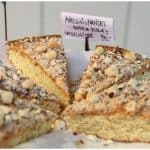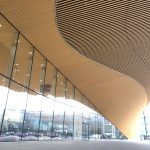Embark on an unforgettable journey with this South Iceland road trip itinerary full of stunning waterfalls, expansive glaciers and spectacular national parks.
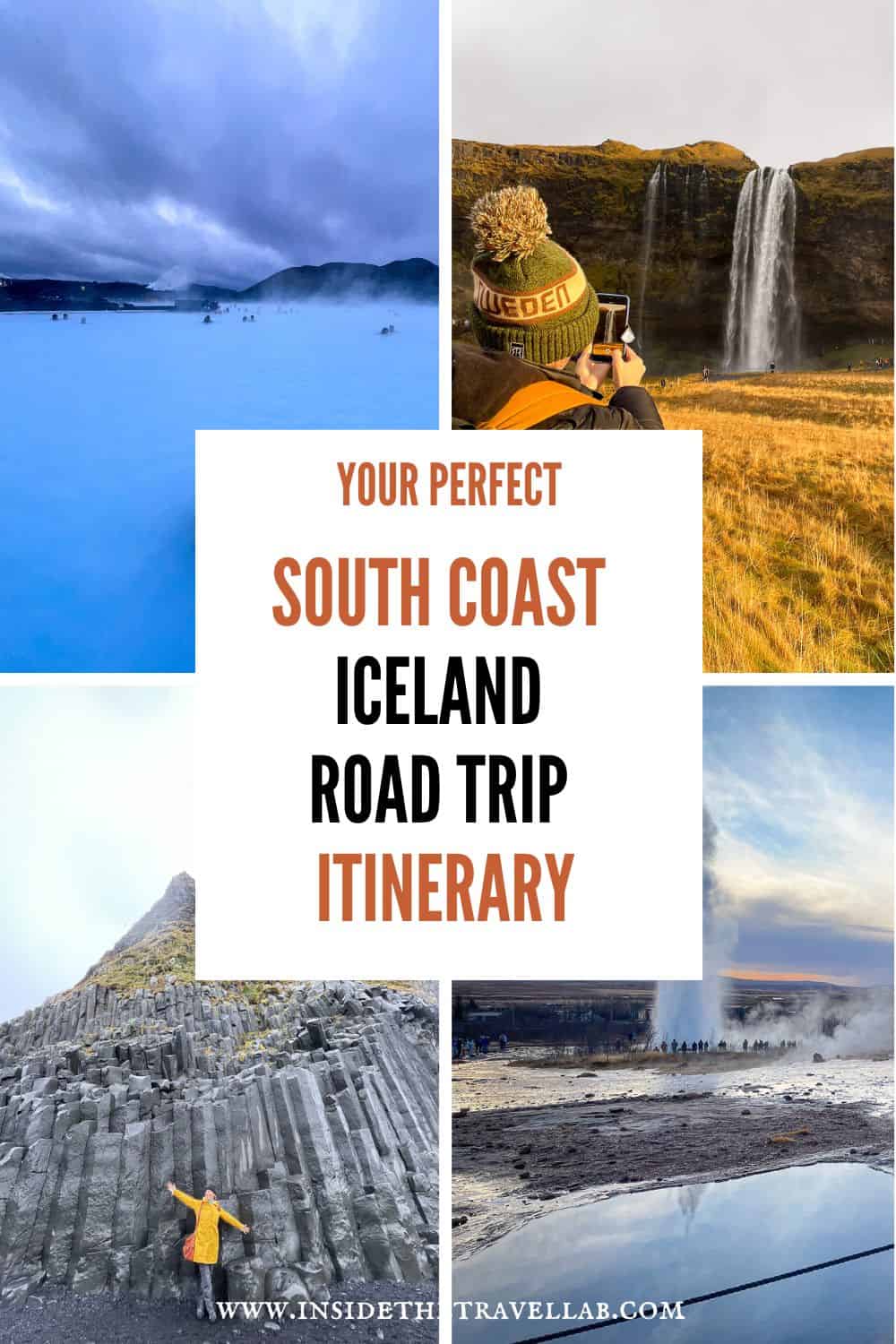
How to Drive Around Iceland’s South Coast
Stretching from the volcanic Reykjanes Peninsula to the majestic Vatnajökull glacier, Iceland’s South Coast is a blur of cascading waterfalls, black sand beaches, glistening icebergs and landscapes that seem to belong in another world.
I absolutely loved it and I’m here to help you explore too. All you need is a plan, a spirit of adventure and a rental car, which you can find here.
I’ve put together a 6-day Iceland South Coast itinerary that will help you make the most of your road trip, leaving you free to make the most of those shifts in weather – and wonder – whenever they occur.
- Recommended reading: your self-drive itinerary for the Snaefellsnes peninsula
Note: if you buy or book through any of the links on this page, we may earn a small commission at no extra cost to you. Cheers!
Planning Your South Coast Iceland Road Trip
Before you embark on your adventure, a little forethought will go a long way in ensuring a smooth and unforgettable journey. Here’s what you need to consider when planning your South Coast road trip.
Best Time to Visit
The South Coast’s appeal shifts with the seasons, each offering a unique experience.
Summer (June-August): With nearly endless hours of daylight, the summer months offer ample time to soak in the landscapes, hike to your heart’s content, do some horse riding, and enjoy boat tours on the glistening glacial lagoon. Temperatures are generally pleasant, hovering between 10-15 degrees Celsius, but be sure to pack layers for those chillier evenings and unexpected rain showers.
Winter (November-March): If the pull of the Northern Lights and the mystique of ice caving beckon you, winter is your season. While daylight hours are limited, the winter landscapes are ethereal, and you might even catch a glimpse of the elusive aurora borealis dancing across the night sky. However, be prepared for snow and icy conditions, which can impact travel plans.
Top Tip: Travelling during the winter comes with slightly lower prices for accommodation compared to the peak season, and there are still plenty of international flights to get you to Iceland, so it can be a good option if summer squeezes your budget.
Transport
To truly experience the South Coast’s remote beauty, a rental car is non-negotiable.
- Car Rental Hubs: Most major international car rental companies, such as Hertz, Avis, and Budget, have offices at Keflavík International Airport and in Reykjavík. Local companies like Lava Car Rental, Blue Car Rental and Lotus Car Rental offer competitive rates and a more personalised experience.
- 4×4 Power: If your trip includes winter travel or venturing onto F-roads (gravel roads that require a 4×4 vehicle), don’t hesitate to opt for a sturdy four-wheel drive. It’ll give you the confidence to tackle any terrain and weather conditions.
- Going Green: For the eco-conscious traveller, a few rental companies offer electric vehicles. While charging stations are becoming more common, it’s wise to plan your routes and charging stops in advance.
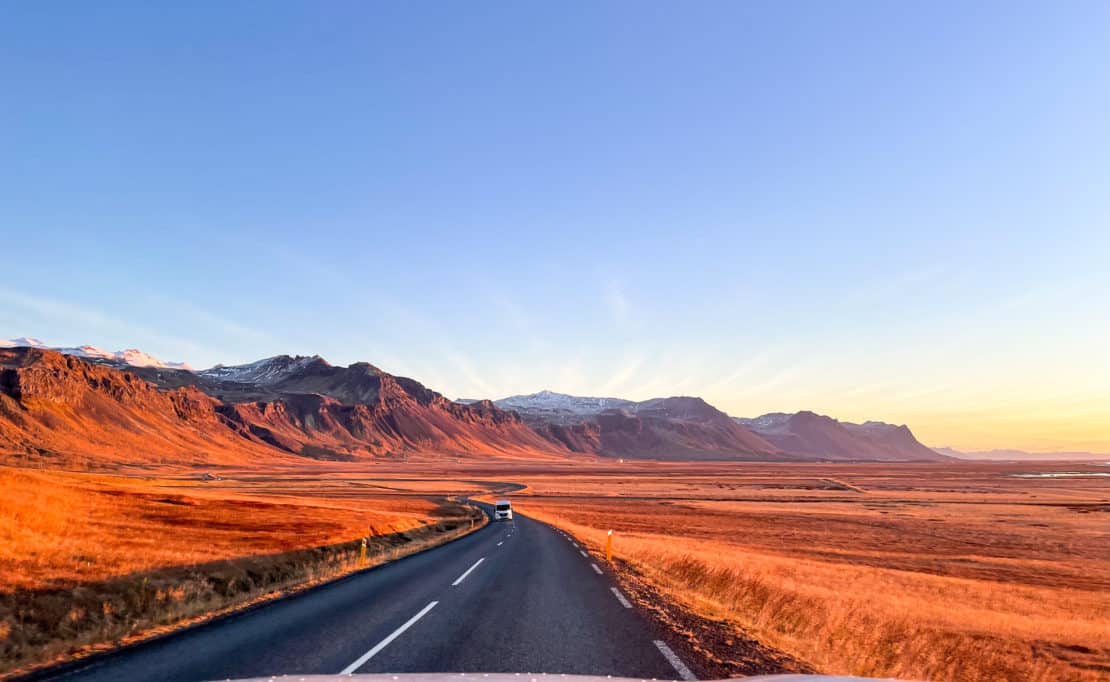
Road Conditions
Iceland’s Ring Road (Route 1) is your lifeline, a well-maintained highway that hugs the coastline. While generally smooth, be prepared for a gravel road once in a while, particularly on side roads leading to natural wonders.
Winter brings its own challenges, with snow and ice demanding extra caution and potentially causing road closures. Always check road and weather conditions before setting off and make sure you know whether or not you need snow chains (and how to fit them.) For more information about when to visit and what to know before you do, check out the Gov.UK Iceland travel advice.
- Recommended reading: check our Complete Road Trip Planner & Toolkit here.
Accommodation
Note, if you book or buy through any of the links on this page, we may earn a small commission at no extra cost to you.
The South Coast’s accommodation scene is as diverse as its landscapes. Luxury seekers will find sleek, modern havens like the gorgeous Hotel Ranga, where minimalist design meets geothermal luxury or the ION Adventure Hotel, a striking glass structure perched atop a dormant volcano.
Those who favour a more intimate experience can opt for charming guesthouses like the Hótel Kría in Vík í Mýrdal, known for its cosy atmosphere and stunning ocean views, or the Fosshotel Glacier Lagoon, which offers front-row seats to the ethereal beauty of the Jökulsárlón Glacier Lagoon.
For budget-conscious travellers or those seeking a unique experience, Iceland also has an array of hostels, farm stays, and campsites, many of which offer shared kitchens and communal areas for mingling with fellow adventurers.
Eco-conscious travellers will be pleased to find a growing number of sustainable accommodations such as the Hotel Búðir, a historic hotel that has been thoughtfully renovated to minimise its environmental footprint.
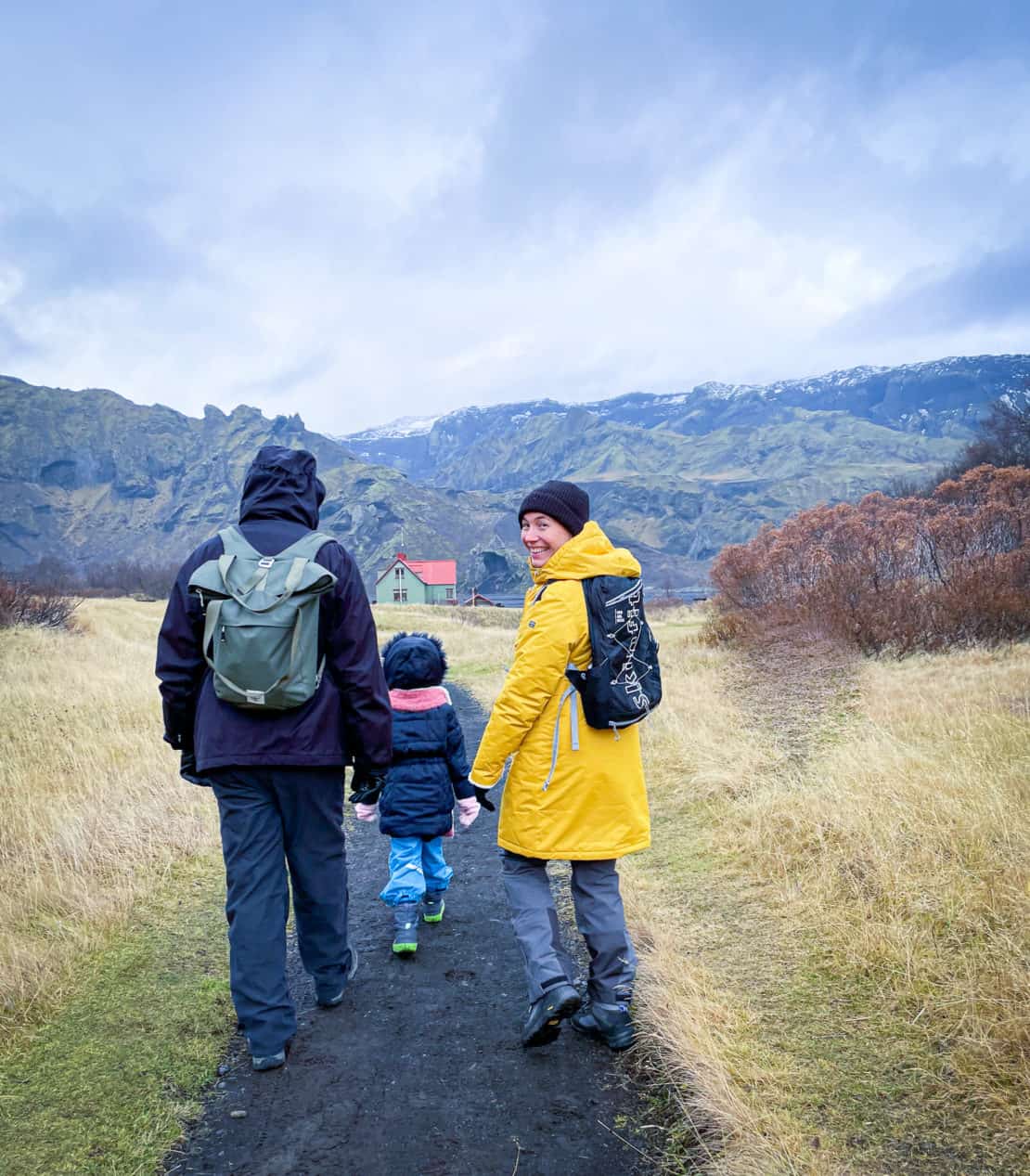
Essential Gear
Iceland’s weather is a fickle beast, capable of throwing all four seasons at you in a single day. Pack strategically to embrace this unpredictability with layers – think thermal base layers, fleece mid-layers, and a waterproof outer shell. Sturdy hiking boots are non-negotiable for navigating rocky trails and mossy lava fields.
Don’t forget a swimsuit for soaking in the Blue Lagoon or any of the numerous natural hot springs dotting the landscape. A good camera is essential for capturing the dramatic vistas, from cascading waterfalls to glacier-filled lagoons.
It’s helpful to work your way through this hiking packing list – it will serve you well for Iceland. Also, this collection of road trip essentials.
How This Itinerary Works
We had a fabulous time on road trip around Iceland – but we were travelling with a young(ish) child which meant that some of the more intrepid options were out of the question.
However, as a pro travel writer, I interviewed every poor soul we came across, including tour operators, locals and fellow travellers. So, for the very few things that we didn’t try ourselves, I feel confident in the recommendations.
If you can’t quite decide what to prioritise, this ultimate Iceland bucket list can help.

The Ultimate South Coast Iceland Road Trip Itinerary
Let’s get started, with a day by day route.
Day 1: Touching Down in Keflavík and Tackling the Reykjanes Peninsula
Your 6-day Iceland Itinerary on the South Coast begins upon arrival at Keflavík International Airport, the gateway to this island of fire and ice. From here, you have two options: head straight to Reykjavík, the eclectic capital, or dive into the geothermal wonders of the Reykjanes Peninsula.
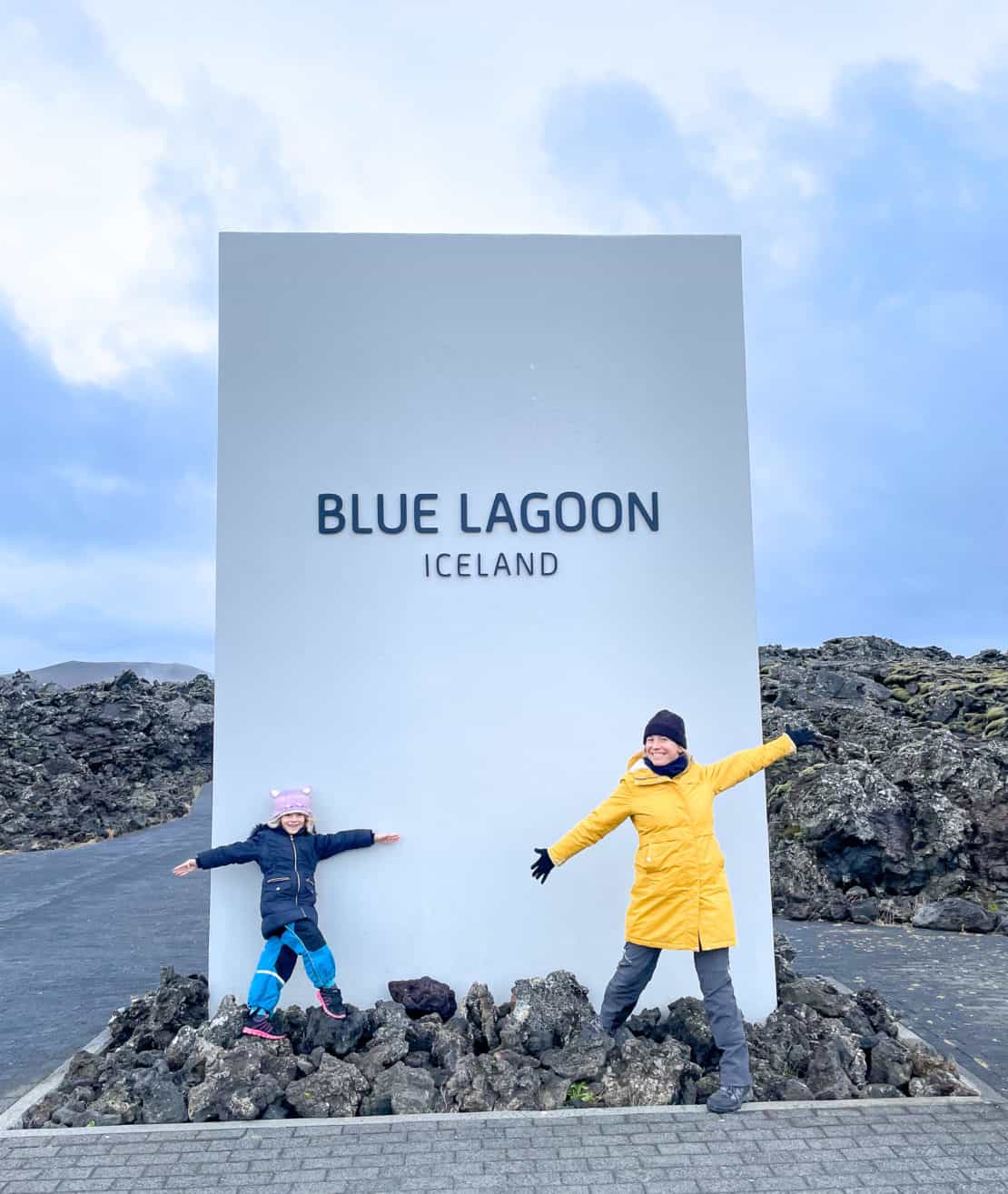
The Blue Lagoon
The Blue Lagoon is something of an icon in Iceland: the iconic geothermal spa, renowned for its milky-blue waters rich in minerals, offers a serene escape from the stresses of travel.
Surrounded by a lava field, the lagoon is an otherworldly oasis where you can soak away your cares, indulge in silica mud masks, and sip sparkling wine from the in-water bar. Consider booking a massage or other spa treatment to enhance your experience.
That said, the crowds can impact the otherworldly experience, so try to visit at off peak times if you can.
Surprisingly, the Blue Lagoon is really close to the airport, so you can fit in a visit right after you land or just before you leave.
The Reykjanes Peninsula: A Volcanic Playground
If you are a big fan of the outdoors, the Reykjanes Peninsula is home to a vast expanse of lava fields and otherworldly landscapes shaped by centuries of volcanic eruptions. Hike through the rugged terrain, marvel at the moss-covered lava formations, and feel the Earth’s raw energy beneath your feet.
Start your exploration at the Bridge Between Continents, a footbridge that spans the rift between the North American and Eurasian tectonic plates.
Next, witness the raw power of geothermal activity at Gunnuhver, Iceland’s largest mud pool. Billowing steam and bubbling mud create a dramatic spectacle, a reminder of the fiery forces that shaped this land.
The peninsula also boasts hidden gems like the Brimketill lava rock pool, where crashing waves create a mesmerising natural show, and the Seltún Geothermal Area, a colourful landscape of bubbling mud pots and steaming fumaroles.
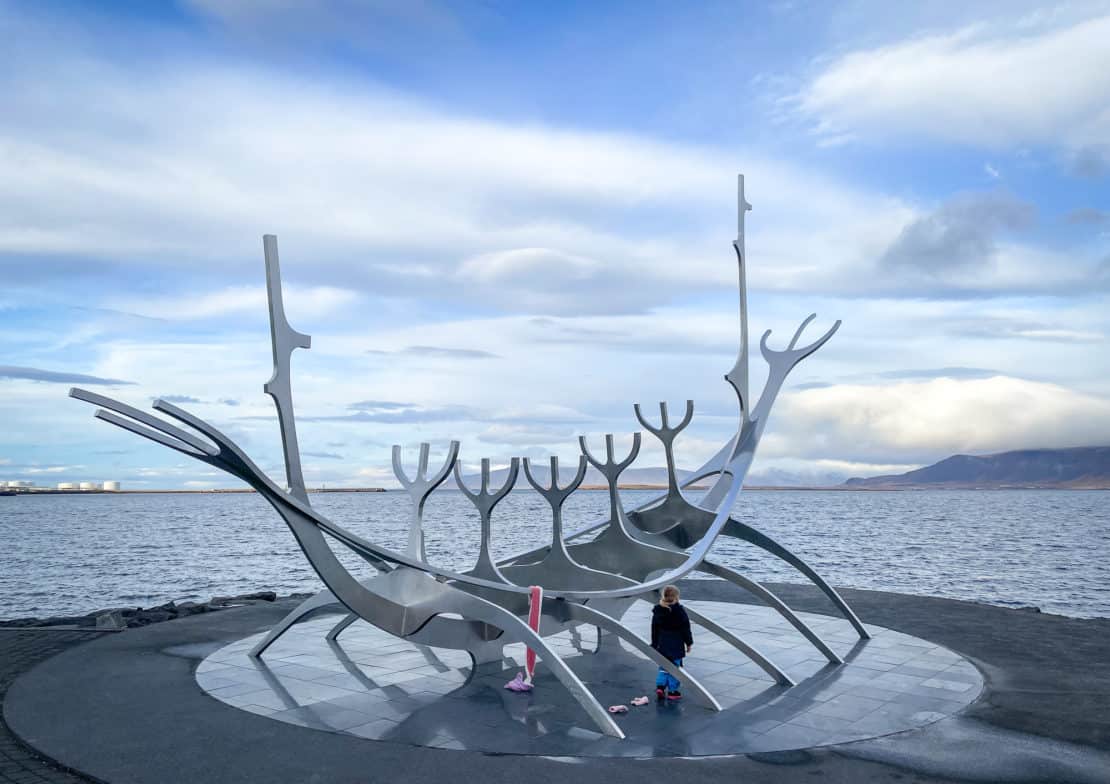
Reykjavík: Your First Night in the Capital
As dusk settles, make your way to Reykjavík, where you’ll spend your first night. This cool city, nestled between the mountains and the sea, is a cultural hub with a unique blend of Nordic charm and modern energy.
Where to Stay and What to Eat
If this is your first time in Iceland and a little pampering sounds good, spend the night at Hotel Borg, a landmark Art Deco hotel, which offers luxurious accommodations, a large parking lot, and a Michelin-starred restaurant. Hotel Ódinsvé, on the other hand, with its stylish rooms and central location, is a great place for those seeking comfort and convenience.
You’ll probably be hungry after an international flight and a full day of exploring, and as Reykjavík will tell you, you’re in luck.
The city’s culinary scene is a gastronomic treat, with restaurants showcasing the freshest local ingredients and innovative Nordic cuisine.
Indulge in upscale Icelandic cuisine at Grillmarkaðurinn, where dishes like grilled langoustine and reindeer steak take centre stage.
Or, for a more casual experience, head to Sægreifinn, a no-frills seafood shack renowned for its hearty lobster soup.
And don’t miss the hot dogs stand where Bill Clinton once snacked.
Day 2: The Golden Circle
Almost all Iceland itineraries include the Golden Circle – and with good reason. It is utterly spectacular.
Here, you’ll find some of the most popular attractions in Iceland – and with them – crowds.
Your best bet is to start early – and brace yourself!
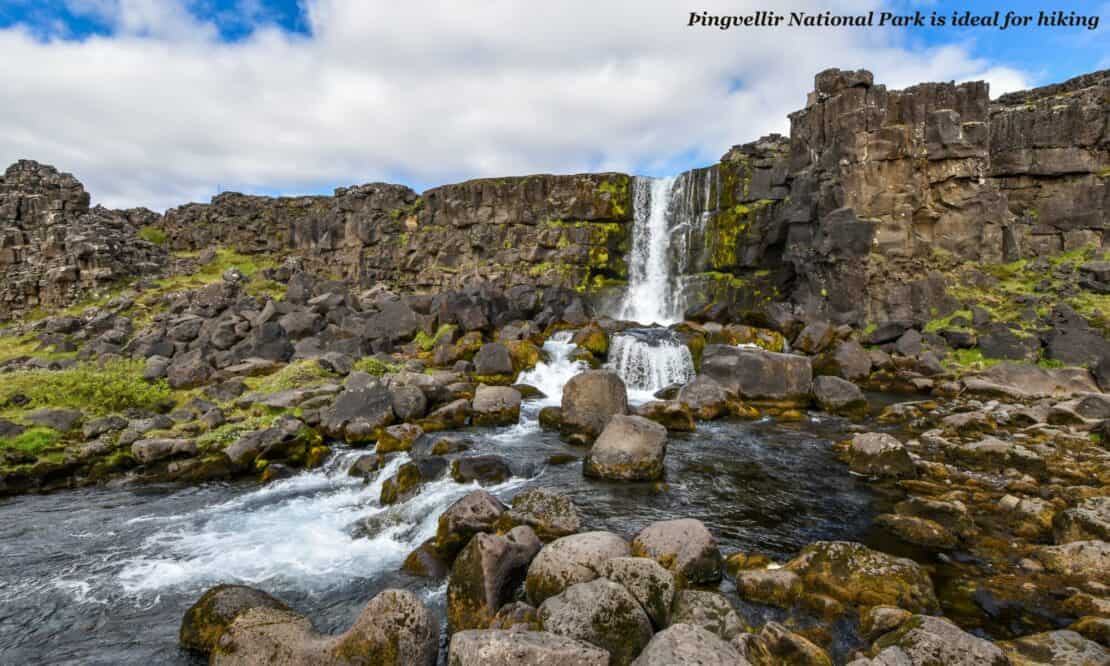
Þingvellir National Park: A Rift in the Earth
Your first stop is Þingvellir, a UNESCO World Heritage Site of immense geological and historical significance. Here, the North American and Eurasian tectonic plates are pulling apart, creating a rift valley that is slowly widening by about 2 cm per year.
Take a short walk through the Almannagjá Gorge, a dramatic fissure where you can literally stand between two continents.
The park is also home to the Þingvallavatn lake, the largest natural lake in Iceland. Its crystal-clear waters, fed by glacial meltwater, offer stunning views and opportunities for snorkelling and diving.
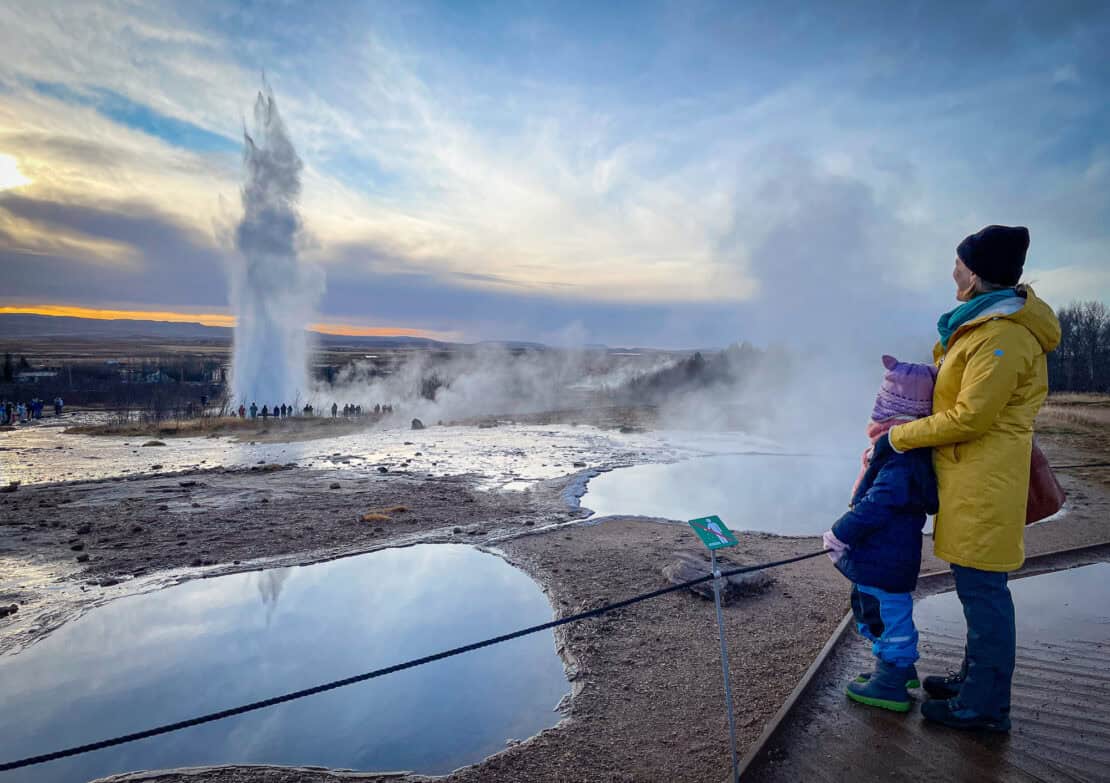
Geysir Geothermal Area
Next, prepare to be awestruck by the geothermal wonders of the Geysir Geothermal Area. Witness Strokkur, a powerful geyser that erupts every few minutes, shooting a column of boiling water up to 30 metres into the air.
The ground rumbles, and steam billows as the pressure builds, culminating in a dramatic eruption that never fails to amaze. It’s one of the best things to see in Iceland.
Take time to wander among the other geothermal features in the area, including bubbling mud pots, colourful hot springs, and steaming fumaroles.
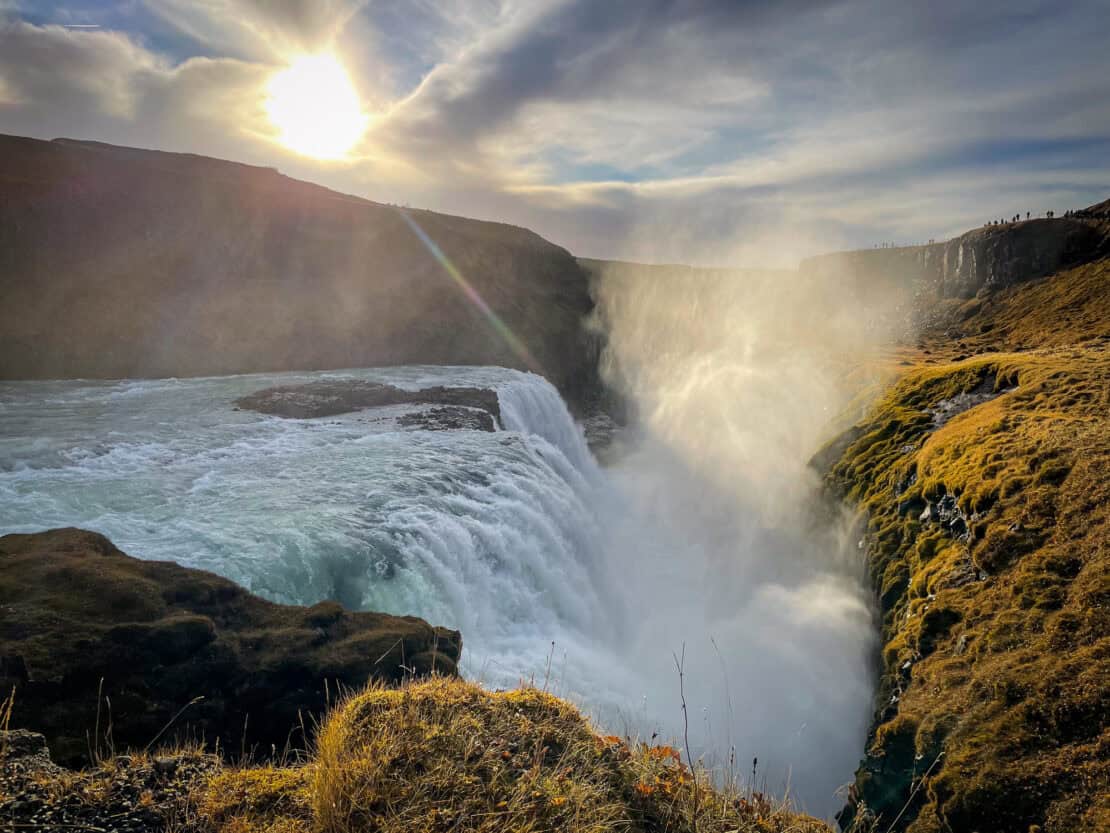
Gullfoss Waterfall: The Greatest Waterfall?
Your Golden Circle journey continues to Gullfoss or “Golden Falls” where the Hvítá River plunges into a deep canyon, creating a powerful cascade of water that shimmers in the sunlight.
It is honestly difficult to describe in advance just how beautiful and mesmerising this place is, even with the crowds.
Walk along the paths that lead to different viewpoints, each offering a unique perspective of this natural wonder.
If you’re visiting in winter, the frozen spray of Gullfoss creates an icy wonderland, with icicles hanging precariously from the cliffs and the roar of the falls echoing through the canyon.
Kerið Crater: A Splash of Colour in the Landscape
For an additional stop, consider a detour to Kerið, a volcanic crater lake filled with aquamarine water. The vibrant red volcanic rock that encircles the lake creates a striking contrast, making Kerið a photographer’s paradise. You can hike around the rim of the crater for panoramic views of the surrounding landscape.
Optional Adventures For the Intrepid
If you’re seeking even more adventure, consider these optional activities:
- Snorkelling or Diving in Silfra: Immerse yourself in the crystal-clear waters of the Silfra fissure, a submerged ravine where you can swim between two continents.
- Snowmobiling on Langjökull Glacier: In winter, the Langjökull Glacier offers an exhilarating snowmobiling experience, zipping across the vast white expanse.
Where to Stay and What to Eat
As the day winds down, you’ll have a choice between two charming towns for your overnight stay: Selfoss or Hella. Both offer a tranquil respite after a day of adventure, with easy access to the Golden Circle route and nearby attractions.
In Selfoss, the upscale Hotel Rangá, renowned for its luxurious log cabins and riverside setting, promises a tranquil escape after a long day on the road. Each cabin boasts a private hot tub and stunning views of the surrounding countryside.
For a more budget-friendly option, the Stracta Hotel Hella offers comfortable rooms and a warm, welcoming atmosphere.
When it comes to dining, both towns offer a surprising array of culinary options. In Selfoss, the Tryggvaskáli Restaurant is a local favourite, known for its inventive dishes that showcase the freshest Icelandic ingredients, such as Arctic char and lamb.
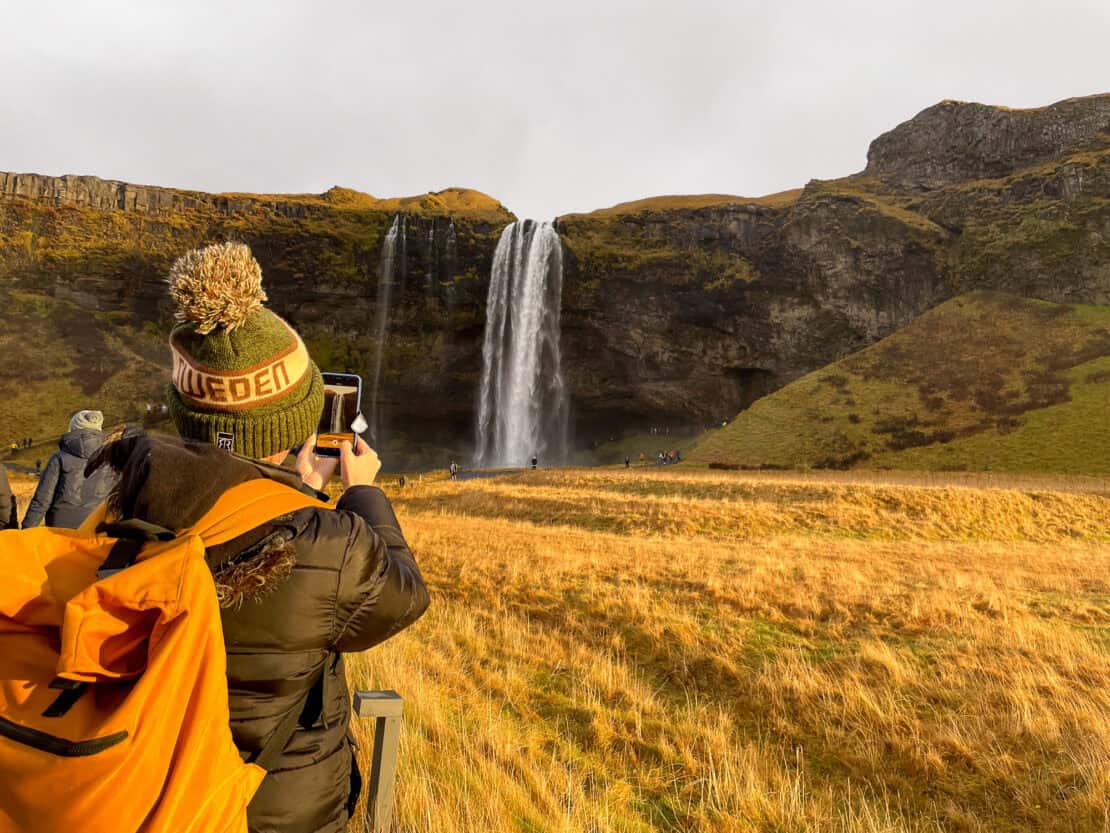
Day 3: Waterfalls and Glaciers
Day three promises a visual and auditory feast as we delve deeper into Iceland’s South Coast.
Seljalandsfoss & Gljúfrabúi: Liquid Veils and Hidden Grottoes
One of the best places to visit in Iceland is the Seljalandsfoss waterfall, a natural attraction plummeting over 60 metres into a pool below. A well-trodden walking path leads you behind the curtain of water, offering a unique, misty perspective.
But don’t stop there. A short hike along the cliffside reveals the hidden gem of Gljúfrabúi, a smaller but no less enchanting waterfall tucked away in a narrow gorge. The thrill of venturing into this secret grotto is well worth the muddy scramble.
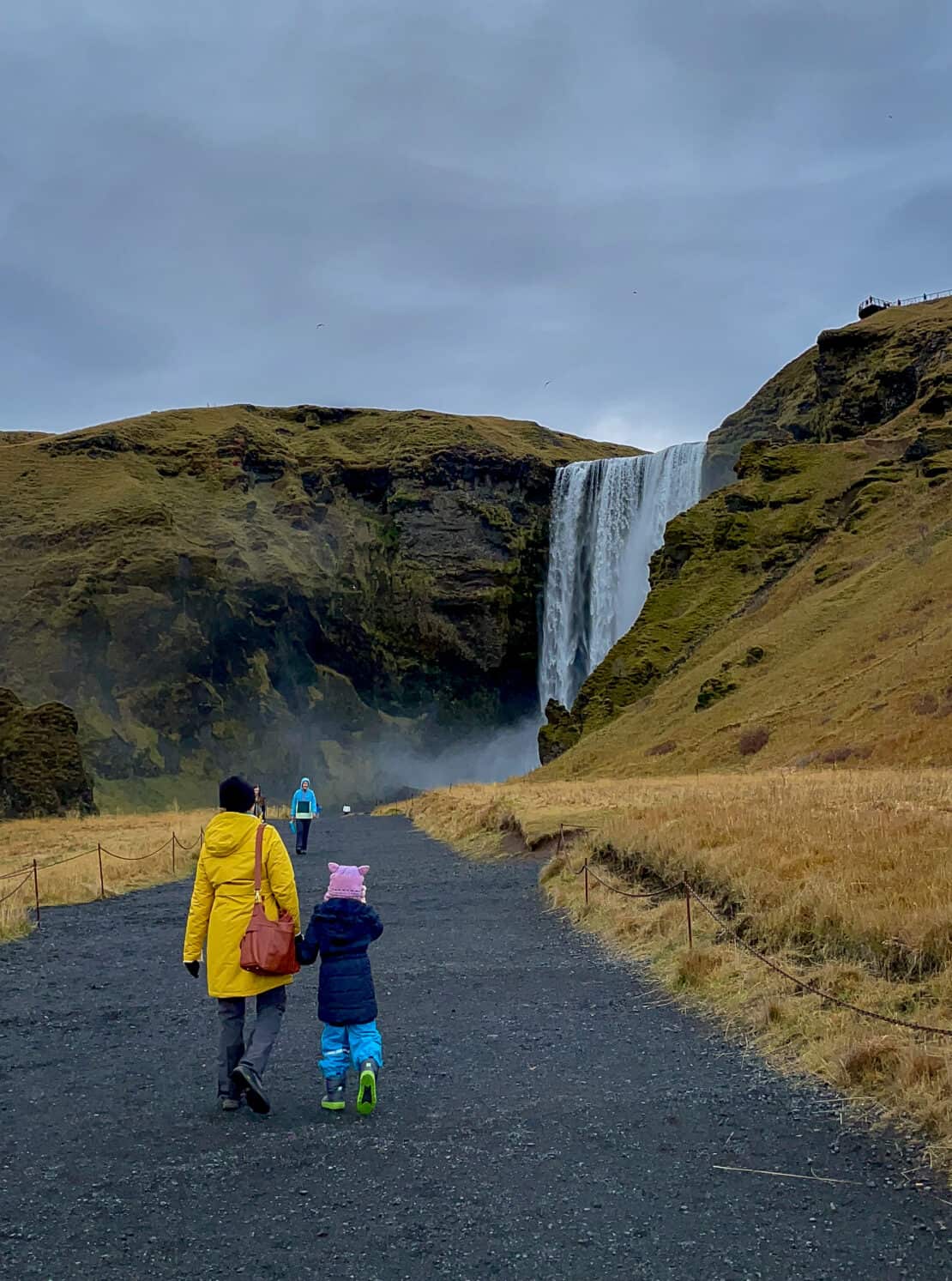
Skógafoss: Thundering Cascade and a Touch of History
Next, the mighty Skógafoss waterfall awaits. This thundering curtain of water, plunging from the cliffs with a roar, is one of Iceland’s most iconic sights.
You have two options here: climb the stairs to the top for panoramic views of the coastline and surrounding countryside or explore the Skógar Folk Museum, a collection of turf houses and exhibits that offer a glimpse into Iceland’s rural past.
Legend has it that a Viking settler buried a treasure chest behind the falls, so keep your eyes peeled!
Sólheimasandur: A Haunting Plane Wreck
Venturing off the Ring Road, you’ll encounter a more sombre but equally compelling sight: the Sólheimasandur plane wreck. This abandoned US Navy DC-3 plane, which crashed on the black sand beach in 1973, has become an eerie landmark and a poignant reminder of the harshness of this environment.
The hike to the wreck is about 4 km each way, so if you don’t have much time left until dark, it’s safer to skip it.
But if you get there early, the surreal scene of twisted metal against the backdrop of black sand and crashing waves is worth every step.
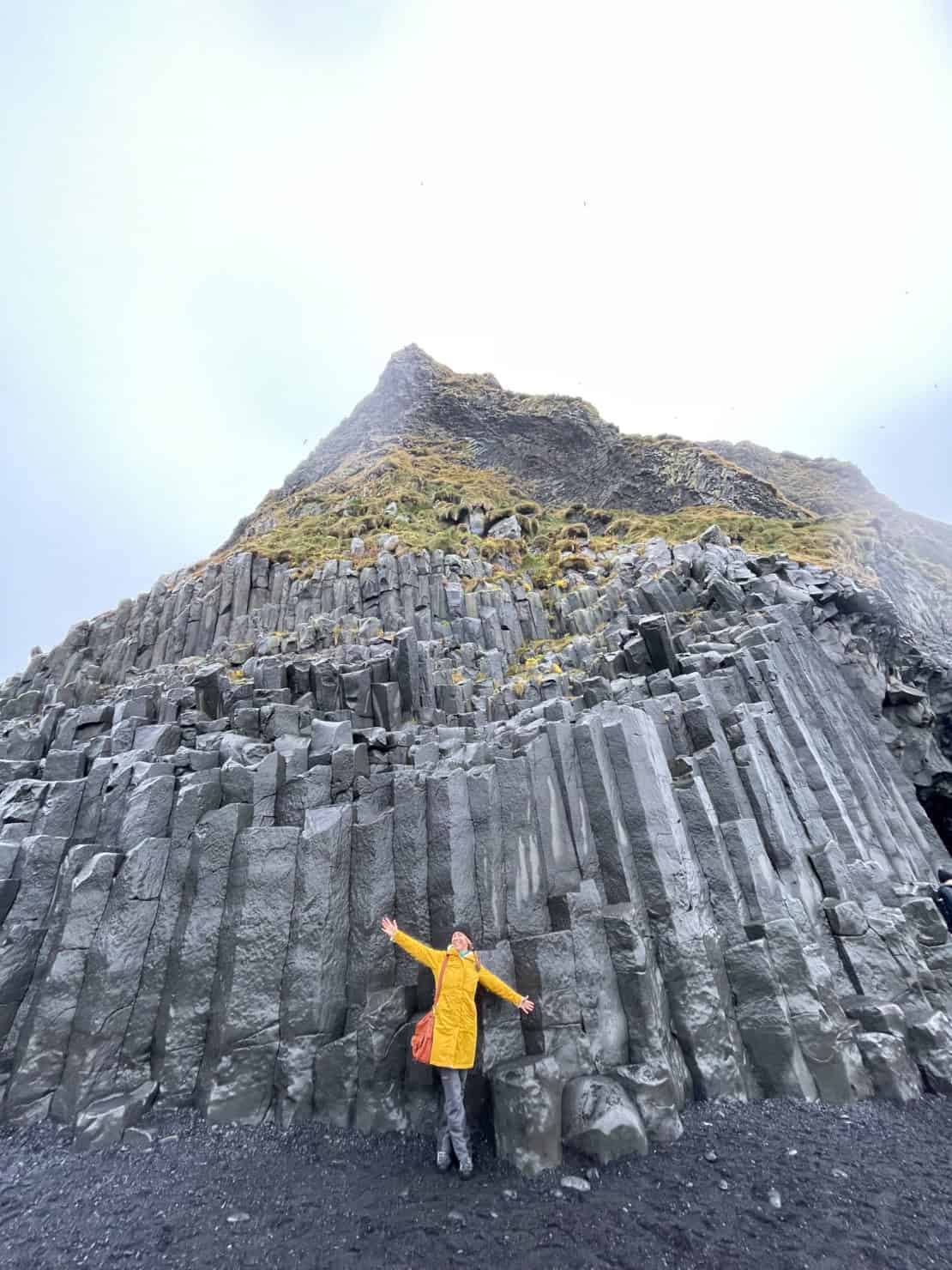
Dyrhólaey and Reynisdrangar: Dramatic Cliffs and Sea Stacks
Continuing eastward, the coastline becomes increasingly dramatic. Dyrhólaey, a towering promontory with a massive stone arch carved by the sea, offers breathtaking views of the surrounding coastline and the Reynisdrangar sea stacks.
These basalt pillars, rising from the ocean like petrified trolls, are shrouded in folklore and add to the otherworldly allure of this landscape.
Reynisfjara: The Dramatic Black Sand Beach
It’s only a 17-minute drive from Dyrhólaey to Reynisfjara, a black sand beach of haunting beauty. The stark contrast of the jet-black sand against the roaring waves of the Atlantic Ocean is enough to command awe in even the most jaded of travellers.
Stroll along the shore, marvel at the basalt columns that rise like a natural amphitheatre and listen to the crashing waves that have sculpted this dramatic landscape.
But be warned, Reynisfjara Beach is notorious for its waves so it’s best to stay a safe distance from the water’s edge.
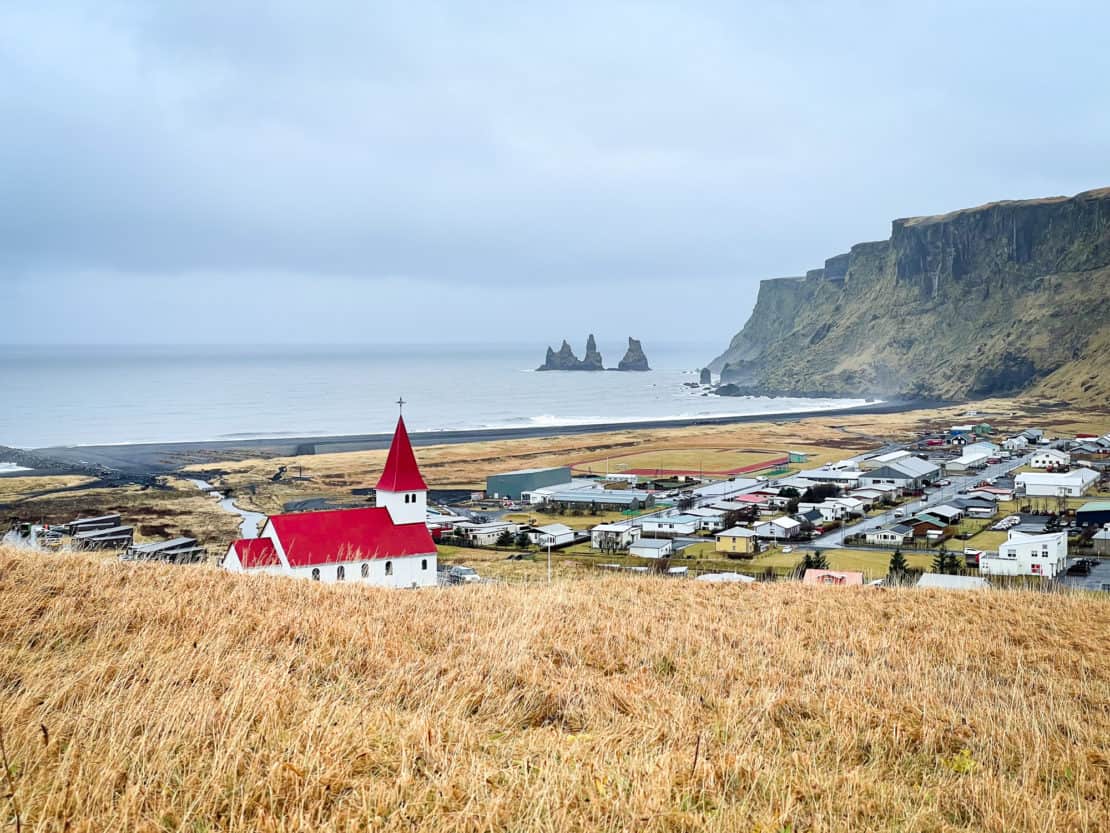
Vík í Mýrdal: A Charming Seaside Village
As the sun begins its descent, make your way to Vík í Mýrdal, a charming coastal village nestled at the foot of Reynisfjall mountain. This picturesque village, with its colourful houses and black sand beach, is a perfect base for exploring the surrounding area.
An Optional Adventure: Scaling the Glacier
If you’re feeling adventurous and the weather permits, consider embarking on a glacier hike or ice-climbing excursion on the Sólheimajökull glacier.
This outlet glacier of Mýrdalsjökull, Iceland’s fourth-largest ice cap, offers a thrilling opportunity to experience the power and beauty of these ancient ice formations.
Guided tours are available for all levels of experience, providing you with the necessary equipment and expertise to safely navigate the icy terrain.
Standing atop the glacier, surrounded by crevasses and ice sculptures, you’ll feel a profound connection to the raw power of nature.
Where to Stay and What to Eat
For a luxurious stay, the Black Beach Suites offer stylish apartments with floor-to-ceiling windows that frame the stunning views of Reynisdrangar and the Atlantic Ocean. Each apartment features a private hot tub, a fully equipped kitchen, and modern amenities for a comfortable stay.
If you prefer a more traditional hotel experience, Hotel Kria, with its modern design and panoramic views, is an excellent choice. The hotel’s restaurant serves delicious Icelandic cuisine with a focus on fresh, local ingredients.
For dinner, The Soup Company is a cosy spot known for its hearty soups, fresh bread, and homemade cakes. It’s the perfect place to warm up after a day of exploring the chilly outdoors. Another option is Halldorskaffi, a family-run restaurant that serves traditional Icelandic dishes like lamb stew and fish soup in a warm and welcoming atmosphere.
Day 4: Glaciers, Lagoons, and Ice Diamonds
Prepare to be awestruck as today’s journey takes you deeper into the glacial wonderland of Vatnajökull National Park, a realm of icebergs, shimmering lagoons, and black sand beaches.
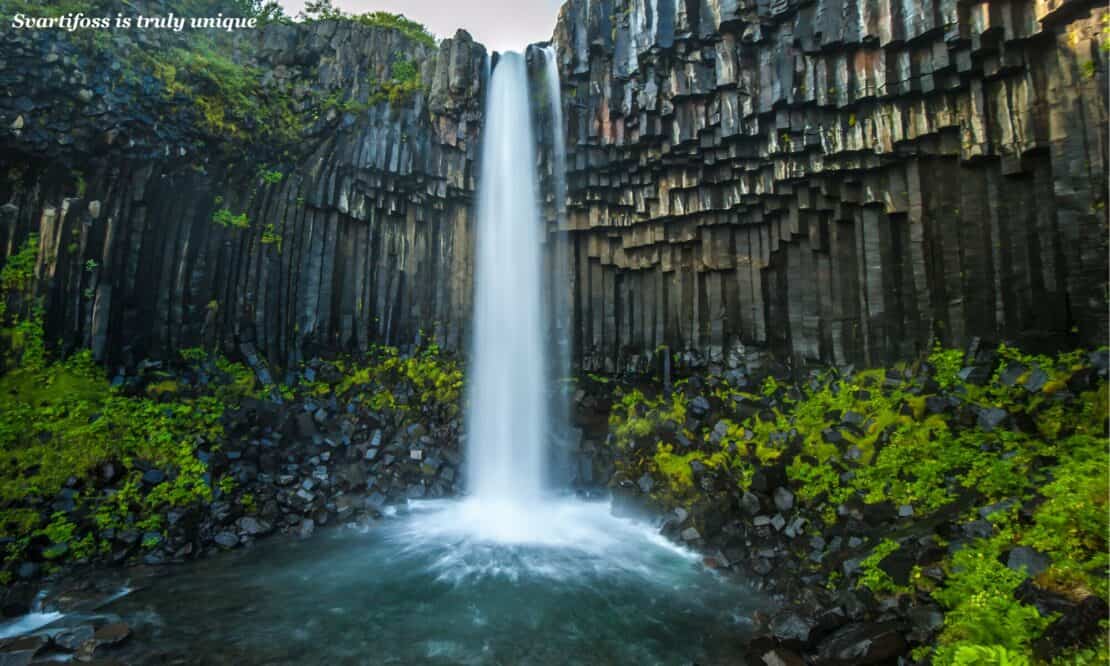
Skaftafell Nature Reserve: Ice and Basalt
Your first stop is Skaftafell, a nature reserve at the foot of the Vatnajökull glacier. Lace up your hiking boots and set off on the well-marked trail to Svartifoss, a waterfall unlike any other.
Here, cascading water tumbles over hexagonal basalt columns, a natural wonder that inspired Icelandic architecture, including the Hallgrímskirkja church in Reykjavík.
The hike is a moderate 2.5 km round trip, but the sight of these geometric columns, formed by ancient lava flows, is worth every step.
After Svartifoss, consider exploring some of Skaftafell’s other hiking trails, which wind through birch forests, across glacial streams, and up to panoramic viewpoints. For the more adventurous, guided glacier hikes offer a chance to walk on the ice itself, exploring crevasses and moulins under the watchful eye of experienced guides.
Jökulsárlón Glacier Lagoon: Icebergs Galore
Next, the ethereal beauty of Jökulsárlón Glacier Lagoon. This vast expanse of water, dotted with icebergs of every shape and size, is a masterpiece.
Take a boat tour and weave through the lagoon’s icy labyrinth, marvelling at the icebergs in shades of blue, white, and even black (a result of volcanic activity). Keep an eye out for playful seals basking on the ice or gliding through the water.
Jökulsárlón is a place of ever-changing beauty, with the icebergs constantly calving from the Breiðamerkurjökull glacier and drifting out to sea. The light also plays a crucial role in the lagoon’s enchantment, transforming the icebergs into a dazzling spectacle as the sun rises and sets.
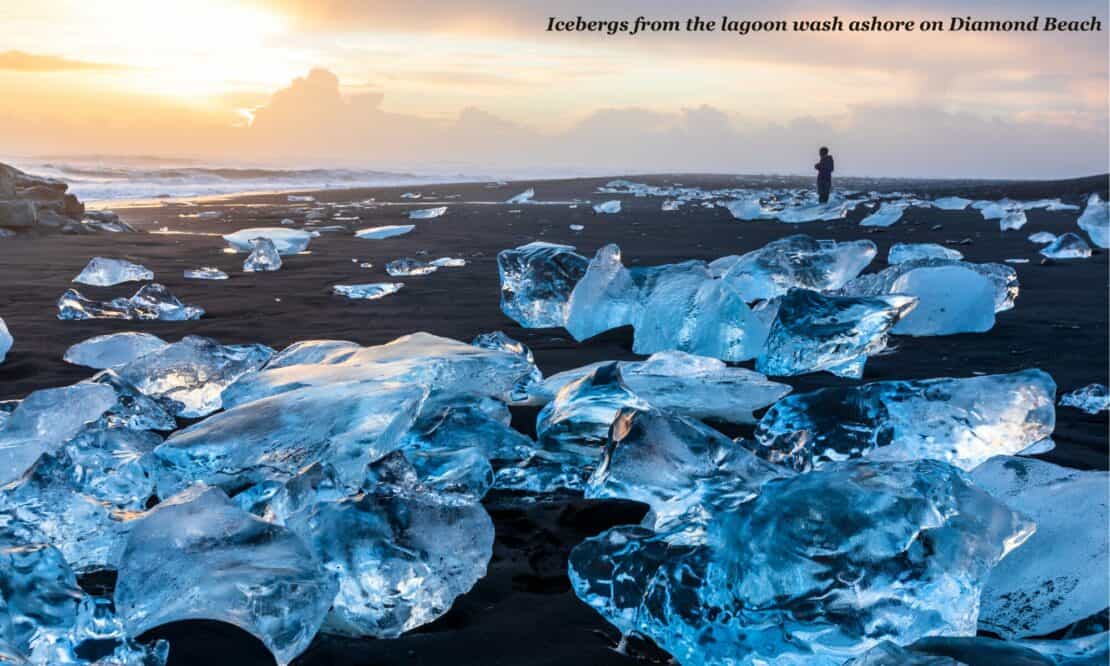
Diamond Beach: Where Icebergs Sparkle on Black Sand
Across the road from Jökulsárlón lies Diamond Beach, a black sand expanse where icebergs from the lagoon wash ashore. These glistening chunks of ice rest on the volcanic sand like scattered diamonds.
Optional Adventures: Exploring the Ice Caves and Kayaking the Lagoon
For a truly unique experience, consider venturing into one of the ice caves that form beneath the Vatnajökull glacier during winter months.
These otherworldly caves, with their blue ice walls and intricate formations, are only accessible with experienced guides, which involves an extra cost, but the adventure is unforgettable.
Alternatively, if you prefer to stay above ground, kayaking on Jökulsárlón Glacier Lagoon offers a different perspective of the icebergs and a chance to paddle among these frozen giants.
Where to Stay and What to Eat
As evening approaches, you’ll find a haven in one of the hotels near Jökulsárlón. The Fosshotel Glacier Lagoon, with its modern design and expansive windows overlooking the lagoon, offers a comfortable stay with stunning views.
For a cosier, more intimate experience, the Hali Country Hotel is a family-run establishment that provides charming rooms and warm Icelandic hospitality.
For dinner, the Jökulsárlón Restaurant, located within the Fosshotel, is a fine-dining establishment with panoramic views of the lagoon. Its menu features fresh, local ingredients and innovative dishes that showcase the best of Icelandic cuisine.
If you’re looking for a more casual option, Café Vatnajökull, just a short drive away, offers tasty Icelandic fare like lamb soup and fish stew.
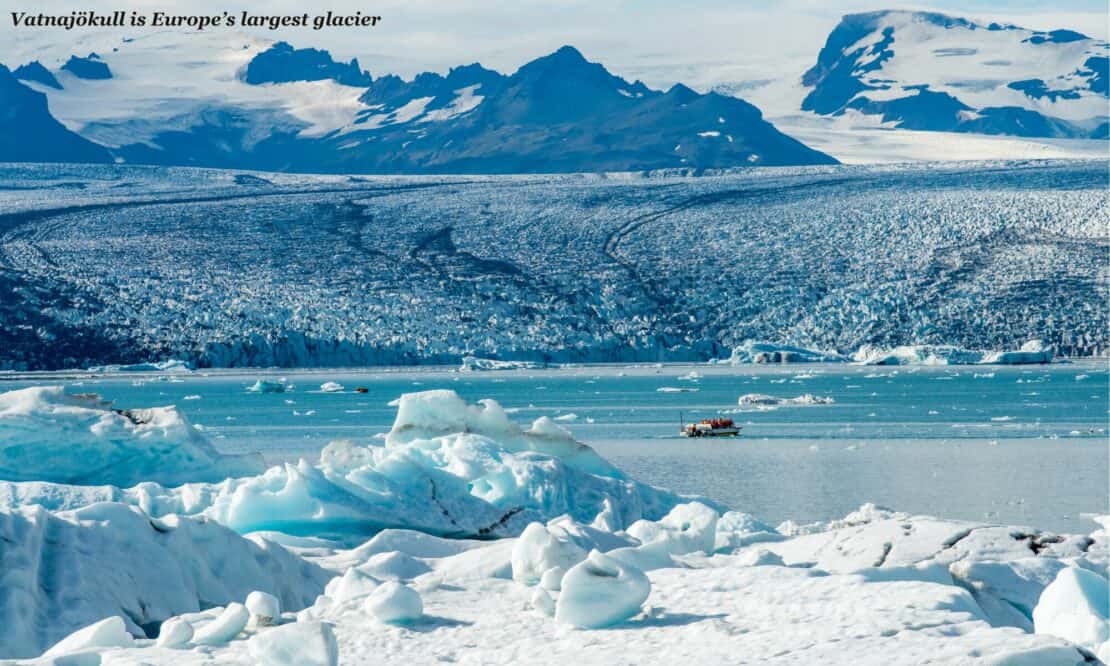
Day 5: Exploring Vatnajökull National Park
Today, you’ll venture further into Vatnajökull National Park, a realm of ice, fire, and yet more breathtaking scenery.
Vatnajökull Glacier: Treading on Europe’s Frozen Giant
Vatnajökull, Europe’s largest glacier covers 8% of Iceland’s landmass, and is a world unto itself, sculpted by millennia of snowfall and glacial flow.
While it’s tempting to explore on your own, I highly recommend joining a guided tour for a safe and informative experience.
Knowledgeable guides will lead you across the glacier’s icy expanse, sharing insights into its formation, its role in shaping the landscape, and the challenges it faces due to climate change.
If conditions allow, you may even have the chance to venture into one of the glacier’s ice caves, a beautiful world of blue ice and intricate ice formations.
Fjaðrárgljúfur Canyon: A Natural Masterpiece
Next up is Fjaðrárgljúfur, a canyon of extraordinary beauty. Carved by the Fjaðrá River over centuries, this deep, winding gorge boasts moss-covered walls, twisted rock formations, and a serpentine river that snakes through its depths.
A hiking trail along the canyon’s rim offers panoramic views of this natural masterpiece, allowing you to fully appreciate its scale and splendour.
As you gaze into the canyon’s depths, it’s easy to imagine trolls and mythical creatures lurking in the shadows, adding a touch of magic to this already enchanting landscape. Be sure to take your time, allowing the serenity of the place to wash over you.
Höfn: Your Gateway to the East
The day is almost over, so make your way to the town of Höfn, known as the lobster capital of Iceland. This charming fishing village, nestled on a peninsula with views of Vatnajökull glacier, is a welcoming base for exploring the Eastfjords or continuing your journey along the main road.
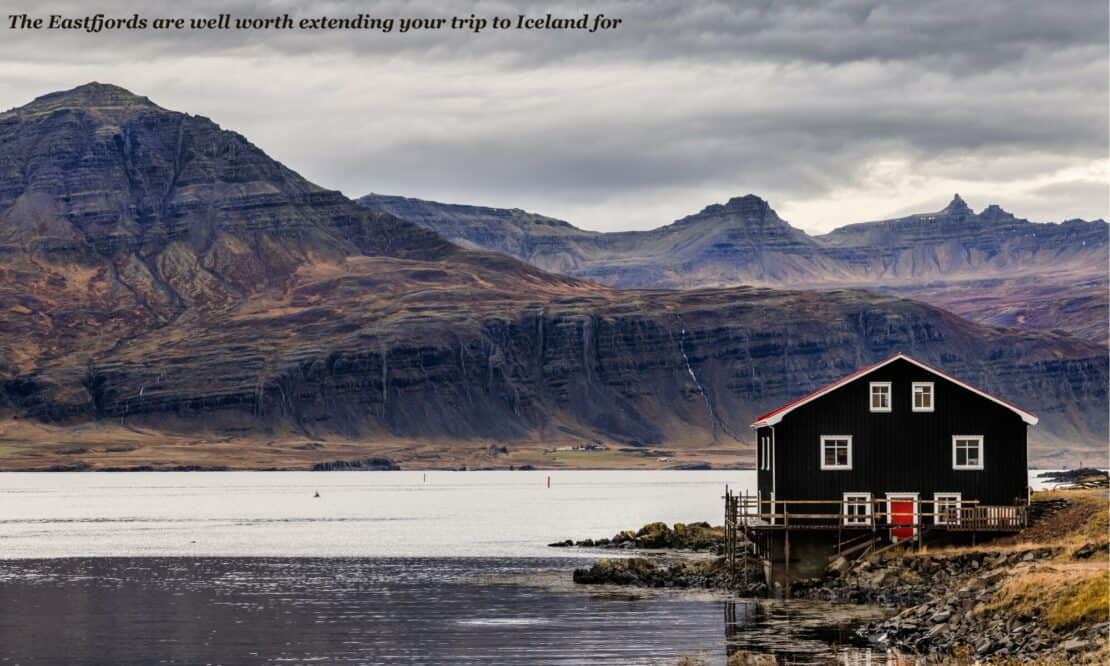
An Optional Detour: Seyðisfjörður and the Eastfjords
If you have enough time and a thirst for more scenic beauty, consider a detour to the Eastfjords, a region of dramatic fjords, charming fishing villages, and rugged mountains.
Seyðisfjörður, a colourful village nestled at the head of a fjord, is a highlight of this region. With its artistic community, charming wooden houses, and picturesque harbour, Seyðisfjörður offers a welcome change of pace from the stark landscapes of the South Coast.
The drive to Seyðisfjörður takes you through winding mountain roads and past cascading waterfalls, adding another layer of adventure to your journey. However, keep in mind that this detour will add extra time to your itinerary, so plan accordingly.
Where to Stay and What to Eat
In Höfn, you’ll find a range of accommodations to suit your preferences. The Hotel Höfn, a modern hotel with harbour views, offers comfortable rooms and a popular restaurant serving fresh seafood.
For a cosier option, Guesthouse Gerði provides a warm and friendly atmosphere, with a communal kitchen where you can interact with fellow travellers.
When it comes to dining, Höfn is a seafood lover’s paradise. Pakkhús Restaurant is renowned for its succulent langoustine dishes. It showcases the freshest catches from the local waters, ensuring a memorable culinary experience.
Day 6: Back to Reykjavík
If time is on your side, head further into the mighty Iceland and discover the Westman Islands. Otherwise, you have two options: make a beeline for Keflavík International Airport or linger a little longer in Reykjavík, savouring its cultural treasures and urban delights.Lava Centre: Where the Earth’s Fury Unveiled
If you haven’t yet visited the Lava Centre, located just a short distance from the airport, it’s well worth a stop. This interactive museum delves into Iceland’s volcanic history, with exhibits on eruptions, lava flows, and the geological forces that have shaped this island nation.
Walk through a simulated ash cloud, feel the rumble of an earthquake, and marvel at the fiery spectacle of lava flowing in the “Fiery Heart of Iceland” exhibition. The Lava Centre offers a fascinating insight into the raw power that lies beneath Iceland’s surface.
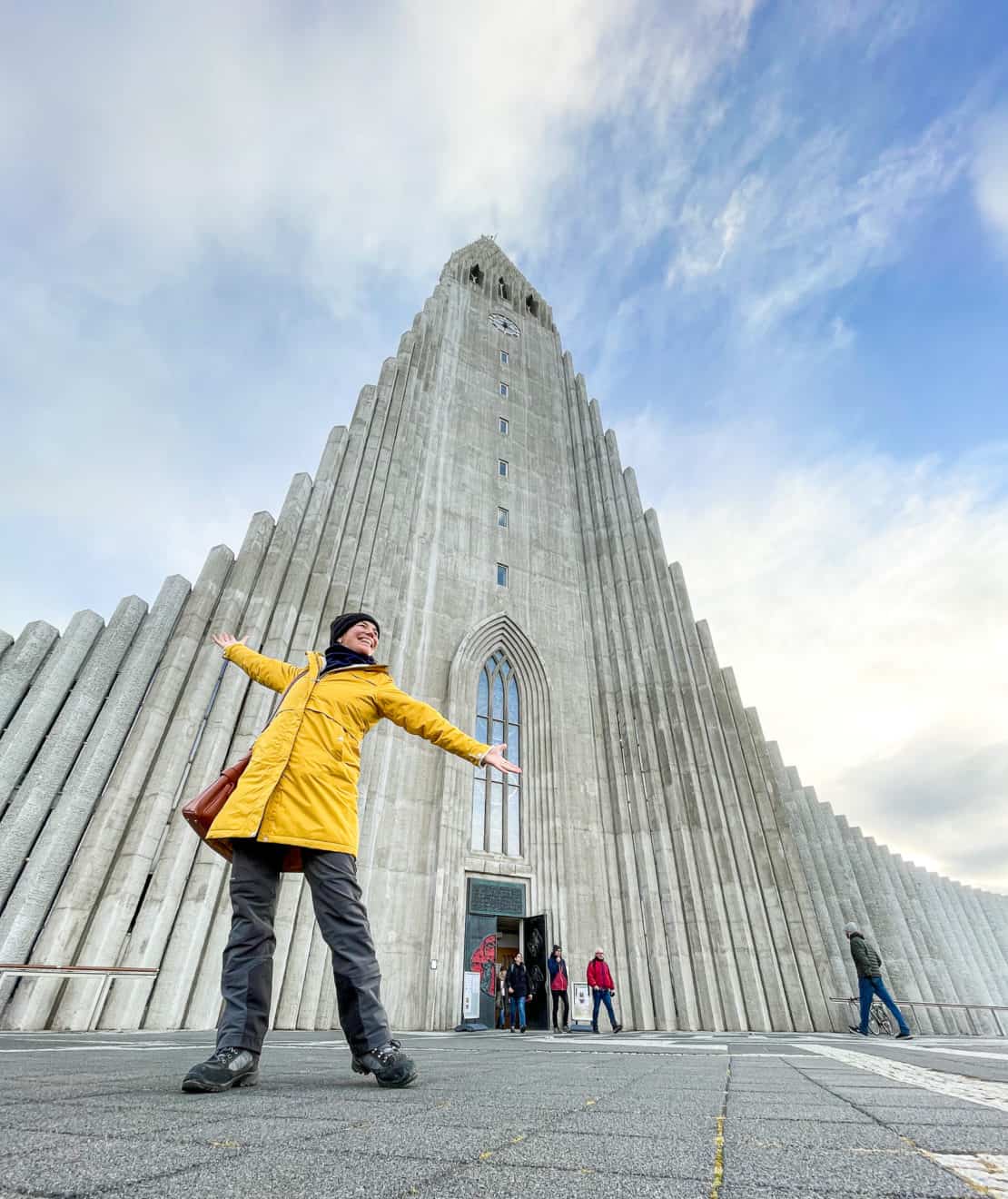
Reykjavík: A Capital of Culture and Cool
If you have time before your flight, there’s still plenty more to see and do in Reykjavík.
- For history, delve into Iceland’s Viking past at the Saga Museum or the National Museum of Iceland.
- For art, try the Reykjavík Art Museum and the Harpa Concert Hall, with its striking glass facade.
- For shops, browse Laugavegur, the city’s main shopping street, for Icelandic wool sweaters, outdoor gear, and quirky souvenirs.
- And if you’re travelling Iceland with kids, check out this article here.
Saying Farewell
From Rekyjavik, it’s an easy drive back to Keflavík International Airport. And from there, you can start planning your next trip to Iceland…


